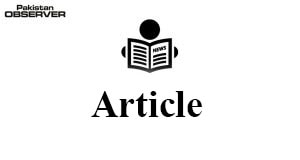RCET must go on !
TEXTILE sector has long been termed as the backbone of Pakistan’s economy, and for most parts it did live up to this notion.
With a direct link with the agriculture sector for obtaining raw material, labor intensive production chain in the downstream and upstream sectors of the industry along with the export sales of the finished goods, the textile sector is a litmus test for Pakistan’s entire value chain process, and unfortunately we have in recent times repeatedly come short of the benchmark.
Pakistan’s textile sector remained one of the best performing textile industries in the region for a very long time.
With ever-increasing electricity load-shedding and continuously rising energy tariffs, Pakistan started losing its competitive edge and thus began the downfall of this industry.
Not only did we become regionally uncompetitive, but many of our industries started shifting abroad.
The current government tried to inject a new life into the textile industry by introducing what it calls as the Regionally Competitive Energy Tariff (RCET).
As per the RCET, in October 2018 the government set the gas tariff at $6.5/MMBtu while the electricity tariff was set at 7.5 cents/kWh in January 2019. The electricity tariff, however, in September 2020 was increased to 9 cents/kWh.
On the Gas/RLNG front, it is evident that even with the RCET Pakistan’s industry is getting gas at a much higher tariff than the other regional players leaving our industry at a clear disadvantage.
On the electricity tariff, Pakistan’s industry is clearly paying a higher cost than India and Vietnam while is just merely at par with Bangladesh and China.
It is important to note, however, that Bangladesh specializes only in value-added textiles or the downstream industry where the energy share in the conversion cost is much lower, whereas Pakistan along with the downstream industry has a huge upstream industry as well in the textile sector which consumes much greater electricity.
As per a recent research conducted by Pakistan Institute of Development Economics (PIDE), Pakistan’s textile sector’s power and fuel share in the conversion cost remained much higher than India and Bangladesh both in the period 2017-2020.
These numbers give a present a velar picture of how even at current tariffs, Pakistan’s textile sector is at a disadvantage compared to the other regional players.
Despite this, making use of the present RCET in 2019 and then eventually the early mover advantage in second half of 2020, Pakistan’s textile sector has captured a good amount of market which has reflected in an increase in export of value added textiles.
There has been a significant increase in exports of Bed Wear and readymade garments, since the introduction of RCET in FY19Q2 and FY19Q3, and in these two quarters after first wave of Covid-19, all four value-added textiles have an increasing export trends.
This is evident of the fact that reduced energy costs have come as a breath of fresh air for the textile sector which has now been injected a new life.
It is important that the advantage we have gained up till now is not only maintained but also further increased. With increasing energy costs, Pakistan is at risk of losing this advantage in coming periods.
The government, therefore, must support the textile industry in becoming regionally competitive by reducing energy costs, especially electricity tariff which shall be reverted to the January 2019 levels at 7.5 cents/kWh.
The gains of the textile sector’s competitiveness to this country must be protected and helped in further increasing, as it has the potential to support the economic growth of Pakistan.
—The author is a Staff Economist at Pakistan Institute of Development Economics (PIDE).










